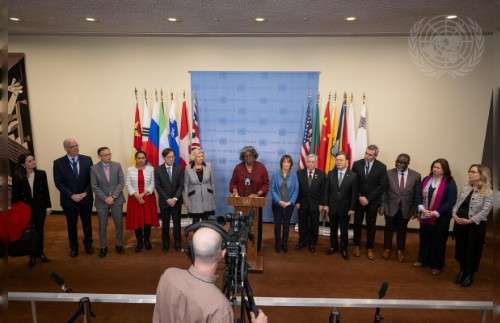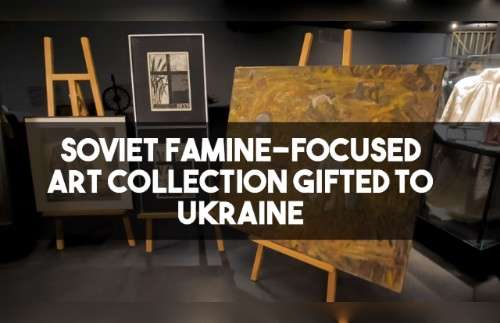The art contest helps keep Uyghur culture alive in the diaspora, especially among youth, the organizer says.
By Nuriman Abdureshid for RFA Uyghur
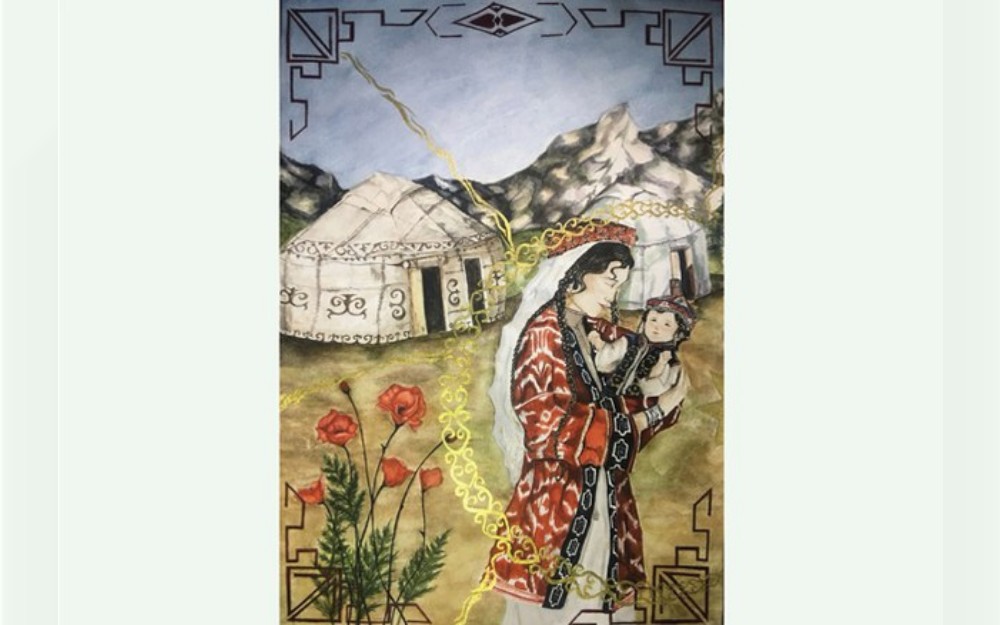
“Home” means different things to young Uyghurs – some of whom may have not even visited their ancestral homeland in China’s far western Xinjiang region.
That was the theme of the latest annual art competition for Uyghur artists and others held by the Uyghur Collective, a Cambridge, Massachusetts-based youth group that has organized the annual event since 2019.
Uyghur artist Gülnaz Tursun from Kazakhstan expressed admiration for the young artists’ sense of pride in being Uyghur, evident in their creations.
“This art contest has a great theme, with each painting expressing sentiments of homeland, home and family,” she said.
“It warms my heart to see that even while living abroad, our youth still harbor a deep longing for their homeland, evident in their works that reflect a profound love for their roots – a sentiment that truly touched me,” Tursun said.
Munawwar Abdulla, the Uyghur Collective’s founder who also works as a researcher at Harvard University, said she and others came up with the competition five years ago because there were not enough platforms for Uyghurs abroad, especially those in the fine arts, to display works that “embody Uyghurism.”
The competition is a way for Uyghurs living in the diaspora to preserve their culture, language and religion amid measures by the Chinese government to wipe them out in Xinjiang – which the mostly Muslim Uyghurs prefer to call East Turkistan – and replace them with China’s dominant Han culture.
It is also a way for young Uyghurs who were born abroad to stay connected to their homeland, where the Chinese government has repressed Uyghurs and other Turkic minorities and committed severe human rights violations that have amounted to genocide and crimes against humanity, according to the United Nations, the United States and other Western countries.
‘I felt compelled’
Thirty pieces by Uyghur artists around the world were submitted during the latest contest, with submissions due by Dec. 25, 2023.
The entries were showcased on the Uyghur Collective’s social media accounts, and viewers voted online between Jan. 13-15. The Uyghur Collective announced three winners on Jan. 17.
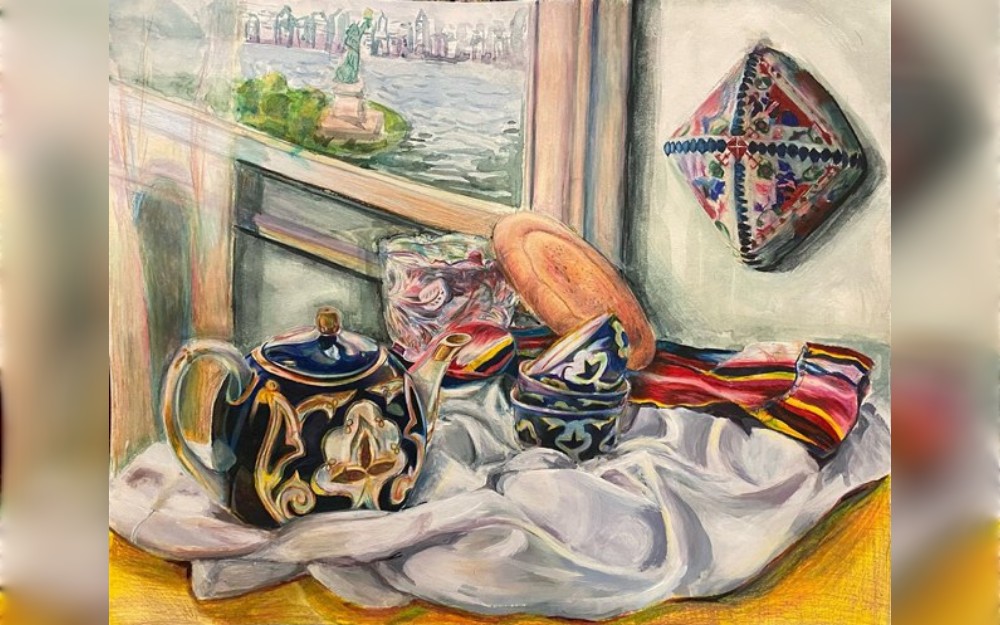
First place went to Kübra Sevinç, 17, from Turkey for her entry titled “Bir Tuwgan,” or “Relative,” depicting a Uyghur mother wearing traditional ikat robe while holding her child against a backdrop of mountains and two yurts on grassland. She won US$300.
Competition judge Malik Orda Turdush said the watercolor painting was “elegantly drawn, skillfully portraying flowers, clothing and the bond between mother and child.”
Sevinç, who incorporated symbols from the Turkish world in the picture, said she became familiar with Uyghur people and Xinjiang after her father attended a protest in 2019 and brought home the blue flag of East Turkistan, which has been hanging in their house ever since.
“Upon seeing that blue flag, I felt compelled to do something for our brothers and sisters in those distant places,” Sevinç said. “I was following Instagram pages about the Turkish world, and a drawing contest on this page caught my attention. Given its connection to Uyghurs and East Turkistan, it felt profoundly meaningful to me.”
Yearning for the homeland
Uyghur artist Merwayit Hapiz from Germany said Uyghur parents in the diaspora play a crucial role in nurturing children to develop with a deep love for their motherland.
“In those paintings, you can discern their profound respect for Uyghur ethnicity, Uyghur life and culture,” she said. “Their yearning for the homeland is palpable. The artworks mirror the Uyghur education and pride instilled by parents in the diaspora. A nation’s existence is revealed through its art and culture.”
In recent years, authorities in Xinjiang have detained an estimated 1.8 million Uyghurs and other Turkic Muslims in “re-education” camps, destroyed thousands of mosques and banned the Uyghur language in schools and government offices. China has said the camps have been closed and has denied any policies to erase Uyghur culture.
“The oppression faced by the Uyghurs felt as if it was targeted to me as well,” said Sevinç. “As a Turk, the ancestors of the Uyghurs were also my ancestors. All my paintings have significance, and I was delighted to create art on a subject that means a lot to me, focusing on the Uyghurs.”
“Freedom and Liberty” by Adina Sabir, a 16-year-old living in the United States, claimed second place and a $200 prize. The work shows a teapot, teacups and a wheel of Uyghur flatbread on a table. A doppa skullcap hangs on a nearby wall alongside an open window through which the Statue of Liberty and Manhattan skyscrapers can be seen.
“‘In ‘Freedom and Liberty,’ the juxtaposition of two locations, notably the Statue of Liberty outside the window and the robust Uyghur atmosphere indoors, makes us think,” Turdush said.
Sabir said she wanted to express her love for her country, the United States, and for her Uyghur homeland in her painting.
“In this painting, the country outside the window and the culture within the house both are a home to us,” she said. “In this free country, we are able to live with our traditions. The Statue of Liberty is a symbol of freedom.”
Kashgar spring
Joy Bostwick, an artist originally from Flagstaff, Arizona, won third place for her watercolor painting “Spring in Kashgar,” a depiction of a lane in the city, a stop along the Silk Road in southern Xinjiang, whose Old City was torn down by Chinese authorities.
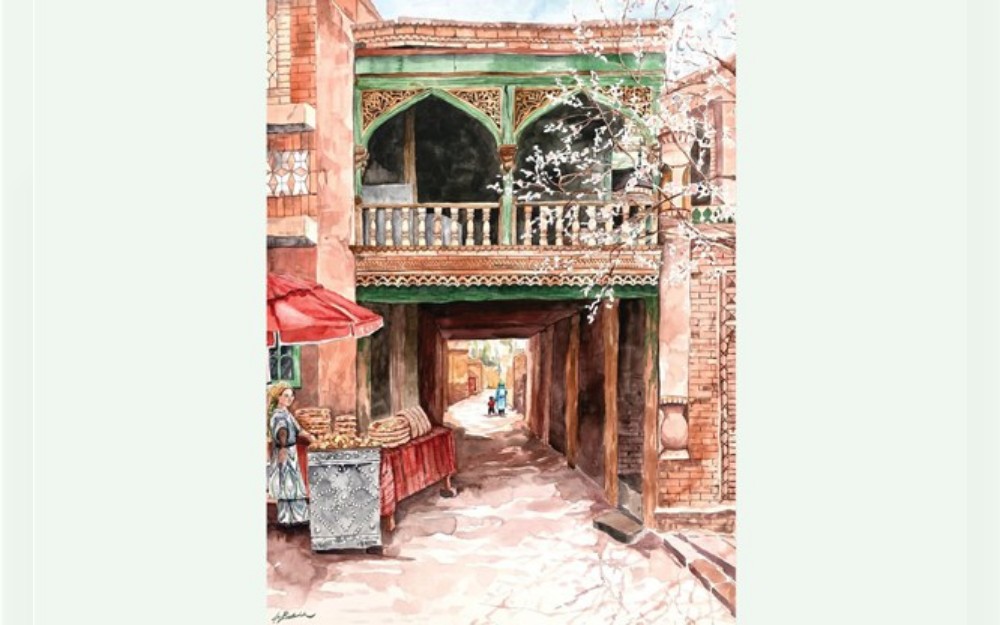
In the watercolor, a Uyghur woman sells flatbread on a table shaded by a red umbrella at the base of a tradition building with a carved wooden balcony that is typical of architecture in southern Xinjiang, while another person holding the hand of a toddler walks along the lane in the distance.
“The warm hues in ‘Spring in Kashgar’ create a nostalgic journey, evoking feelings of home, country and the place of our upbringing, aligning perfectly with the theme of the competition,” Turdush said.
Bostwick, who has lived in Xinjiang and various parts of Asia, says on her website that she is “passionate about documenting and helping to preserve the traditional cultures of the world through my paintings, especially those that are in peril of disappearing because of outside pressures or governmental policies.”
“I want to showcase the dignity and beauty of people and places that might otherwise be overlooked.”
In addition to the winning entries, four paintings by Medine Chira, 22, from Canada, featuring Uyghur girls and boys were popular with viewers during the competition, portraying the rich and vibrant culture of the Uyghurs.
One painting captures a young man playing the dutar, a two-stringed lute with a long neck and pear-shaped body, while a young woman rests her head on his shoulder. Another one shows the same young man, now wearing a white shirt with an embroidered collar placing a doppa on the woman’s head.
Chira’s third painting shows a girl wearing a doppa and silk ikat dress placing sangza, deep-fried noodles in a twisted pyramid shape, on a table, while her final work is of a Uyghur girl seated at a table, relishing fruit.
“While these paintings share similarities, they encapsulate the essence of home for me,” Chira said. “These scenes are a common occurrence in Uyghur households, especially during [the holidays] Nowruz or Eid, where we proudly wear our traditional attire and set up beautiful table spreads. Sharing fruit and sangza with our families is a cherished Uyghur tradition.”
Translated by RFA Uyghur. Edited by Roseanne Gerin and Malcolm Foster.
“Copyright © 1998-2023, RFA.
Used with the permission of Radio Free Asia,
2025 M St. NW, Suite 300, Washington, D.C. 20036.
https://www.rfa.org.”











